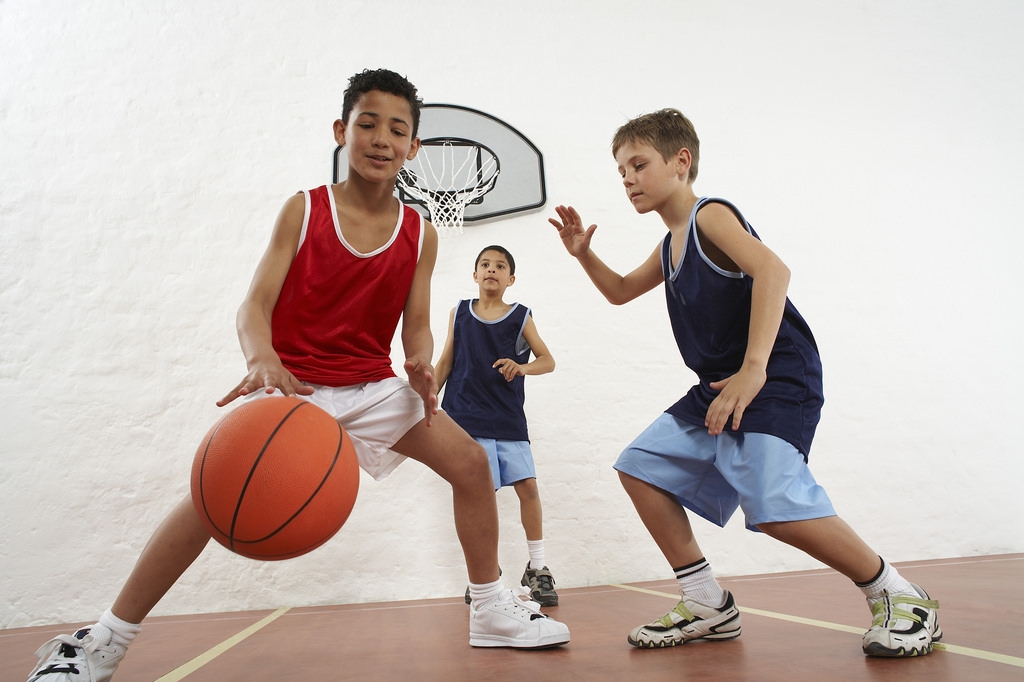
08 Jan 10 Indoor Activities for Preschoolers
The fun and excitement of the holidays are over, but the cold and dreary weather remains! With outdoor opportunities limited, indoor activities are taking center stage in homes, schools and care programs across the country. Indoor games can present both mental and physical challenges, and are a great way to keep kids healthy and active throughout the long winter months.
Here are ten indoor activities for kids that will stimulate their brain and keep their bodies moving until spring:
1. Freeze!
Assemble together some of your kids’ favorite upbeat songs and push “play!” Get them to dance until you stop the music. Once the music stops, the kids have to freeze in whatever position they’re in—whether they’ve got one leg up, their arms in the air, or are doing a handstand! A variation of the game makes the kids freeze in certain poses like animals, shapes, letters, or yoga poses. This game challenges kids’ coordination, gets their heartbeat up, and improves muscle tone.
2. Indoor Hopscotch
This game is just what it sounds like—everybody’s favorite outdoor game adapted for indoor fun. Instead of chalk, use masking tape to form the boxes on any indoor surface. A traditional board might have boxes 1-3 placed in a single line, one on top of the other, boxes 4 and 5 placed side by side, followed by box 6 by itself, and then boxes 7 and 8, placed side by side, and topped off by a final half-circle box 9. Mix up the board to make the game harder or easier to adjust for age and physical ability. Next, choose a marker. Good markers include coins, stones, beanbags or paper clips. The first player throws the marker into box 1 without letting it bounce or touch the lines, and then hops (one foot per box) avoiding box 1. The player can rest on box 9 before hopping back. On the way back, the player picks up the marker on box 1. The player continues by throwing the marker onto box 2 and repeating the process until he or she messes up (either by throwing the marker outside one of the boxes, allowing the marker to bounce, or failing to hop the board correctly). Indoor hopscotch is a great way to practice balance and throwing coordination.
3. DIY Balance Beam
Don’t put your masking tape away just yet! Use the tape to make a straight line on any indoor surface to create a balance beam. Challenge your tykes’ balance and overall coordination by getting them to walk on the makeshift beam, one foot in front of the other, without straying from the line. Up the ante by asking them to walk backwards, balance on one foot, or do jumps.
4. Bowling Anywhere
Who says you need an alley to bowl? Bowling can be set up anywhere! Just grab 10 water bottles and set them up in a bowling triangle. Place some tape in a line on the floor a few paces away, find an indoor ball (like a dodgeball or a spongy ball) and get the kids started in their very own bowling league! This game helps kids develop their aim and throw, allows them to engage in healthy competition, and practice good sportsmanship. To make the game harder, fill up the bottles with water–this will make it more difficult to knock them over.
5. Simon Says
The classic game of command and obey. Start off with a parent or adult designated as “Simon.” Then, set the kids up in a line or circle around Simon. The game proceeds with Simon giving demands in the form of “Simon says ______” (jump, clap, dance, pat your head, touch your toes, etc.). Simon demonstrates the commands and the kiddos may only obey if Simon first says the phrase, “Simon says.” If they do something without Simon saying so, they’re out. The last player remaining gets to be Simon in the next round. There are lots of ways to trick players including demonstrating a move that doesn’t correspond to a command. This activity is a fun way to work on listening skills and reflexes.
6. Indoor Basketball
This version of basketball is for all ages! Find a bucket and something small and round to use as a ball (like a rolled up sock). Let your tykes take turns tossing the ball into the buckets. When a player makes it, he or she takes a step back and goes again until they miss. The kid who makes it from the furthest distance wins.
To make it harder, play HORSE. Let one participant toss the ball into the bucket. If he or she makes it, all the other players have to toss the ball from the same place where the first player was standing. If the players miss, they get the letter “H.” The next time a player misses, they get the letter “O” and so forth. When a player gets enough letters to spell “HORSE,” they’re out. Indoor basketball gives kids a chance to work on their aim, coordination and distance judgment.
7. Musical Chairs
A great way to combine music and movement! Have the players each grab a chair and put them in the middle of the circle. Make sure to remove one chair so that the number of chairs is one less than the number of participants. Crank up some fast paced tunes, and get the kids to walk in a circle around the chairs. When the music stops, the players scramble to find and sit in a chair. The player without a chair when the music stops is out. In the next round, another chair is removed and the process is repeated until there is only one person left–the winner!
8. Limbo
All you need for this game is a limbo stick! Broom handles, yard sticks, or any other long, thin rod will work. Have an adult hold the stick high during the first round to allow all players to pass through relatively easily. In successive rounds, lower the stick by increments, until the kids have to bend backwards, without touching the stick or ducking down, in order to pass through. The last kid who can pass under successfully wins! Limbo is a great way to improve strength and flexibility.
9. Hide and Seek
Hide and Seek is an indoor game all parents, caregivers and kids should have in their arsenal! Designate a home base at which the “It” player counts to 20 (like a couch, bed or some other large, stable object). The other players rush to hide before the counting is finished and “It” tries to find them. To make the game more active, let the players try to sneak back to home base while “It” is looking for them. If they make it back without being tagged, they’re safe—but if “It” tags them before they get back to base, they’re “It” in the next round. Ramping up the activity in this way allows the kids to practice ducking, dodging, and crouching. Best of all, this game gets the kiddos moving during those long winter months!
10. Duck, Duck, Goose
Gather all the kids into a circle and have them sit down. Designate one player as the “Goose.” The Goose stands up and walks around the circle, tapping each sitting child on the head or shoulder and saying either “Duck” or “Goose.” If “Duck” is said, the player stays sitting, but if “Goose” is said, the chosen child stands up and chases the “Goose” around the circle. If the chosen child tags the “Goose” before he or she gets back around the circle, he or she must be “Goose” again. But if the “Goose” manages to race around the circle before being tagged, he or she is safe and the chosen child becomes “Goose.” This game gets bodies moving and hearts pumping!
Don’t forget to also check out what your local Amazing Athletes program is doing to help preschoolers develop fine motor skills, improve coordination, and keep kids active through the winter!




Sorry, the comment form is closed at this time.